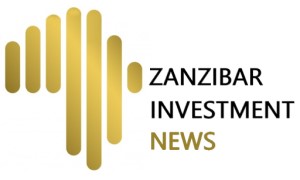Despite having 60 percent of the world’s arable land, huge freshwater reserves, and at least 300 days of sunshine a year, Africa produces only 4 percent of the world’s agricultural output.
The continent is a net food importer with an import bill of over $60 billion a year. This is unsustainable, irresponsible, and unacceptable.
Yet barely a stone’s throw away from the Indian Ocean lies a region which the German colonisers thought had the potential to be a food basket of all of Africa.
It is the region that boasts a diverse and stunning geographic tapestry.
Towering mountain ranges with their lush green slopes and rich rainfall provide a dramatic backdrop, while vast savannahs stretch out in the lower altitudes.
This variation creates a region of undeniable beauty, with fertile valleys fed with 143 rivers that nurture many agricultural projects.
This is Morogoro. It is colossal – bordered to the north by Manyara and Tanga, to the east by Pwani and Lindi, to the south by Ruvuma and to the west by Iringa, Njombe and Dodoma.
Driving from the two furthest points within Morogoro is a day-long journey, giving credence to the idea that the region needs to be restructured for more effective administration.
Compared to other regions, Morogoro has many medium- and large-scale farmers.
From sisal and sugar to abundant food and cocoa plantations, the lands in Morogoro hold immense potential for agricultural development.
The story goes that those who go to live in Morogoro by chance rarely leave – you just need to visit places like Malinyi, Ifakara, Kilombero and Mlimba to understand why.
Despite possessing the potential that stand heads and shoulders above other regions, Morogoro’s socio-economic profile reveals that the three million residents of the region suffer a similar fate that those in other regions suffer.
Morogoro ranks in the bottom half of the list of regions in Tanzania in terms of per capita GDP, with less than average of Tanzania’s GDP.
While poverty is a common story in Tanzania, it is quite saddening when it happens in a region that would have otherwise promised great prosperity for its residents.
If there is a region where agriculture could have been a platform for catapulting its residents out of poverty, then Morogoro is that region.
But our leaders’ failure to look at agriculture as big business, thus often ignoring its transformative power, has brought Morogoro and other similar regions where they are today.
Morogoro’s forestry sector, for example, valued at a mere 24.42 million dollars in 2019 is a case in point.
That output pales in comparison to New Zealand’s 7 billion dollars output that same year, New Zealand’s extra size notwithstanding.
Unlike Tanzanians, New Zealanders have found a way to create significant wealth by capitalising on their resources, in this case, forestry, producing much more than our entire gold production per annum.
Prioritising the right things could significantly improve prosperity.
Another contributor is the failure to add value to agricultural products.
Morogoro is Tanzania’s leading cocoa producer, but it falls prey to the global trends whereby Africa, which produces 70 percent of cocoa globally, gets only 2 percent of the value of chocolate produced.
In other words, 98 percent of the value in the chain goes to the developed world.
The closure of the many once-thriving agro-processing plants in Morogoro is partly to blame for that state of affairs.
While statistics indicate that manufacturing has been increasing lately, it is possible that that can be ascribed mostly to the growth of the construction sector.
Efforts must be made to reverse the trends which started decades ago to ensure that millions who farm benefit from their labour.
Food processing plants will not only add value to agricultural products by converting raw materials into processed goods such as canned fruits, packaged vegetables, juices, and snacks but also create employment opportunities and add value to agricultural produce, increasing their marketability and shelf life.
Similarly, developing efficient transportation and logistics infrastructure would ensure the timely delivery of agricultural products to markets.
SGR can significantly reduce travel times between Dar es Salaam and agricultural hubs in Morogoro, unlocking new market opportunities.
Direct connections to the southern regions of Lindi, Mtwara, and Ruvuma from Kilombero, Ifakara, and Mlimba would similarly improve access to new markets and trade.
Additionally, cold storage, warehouses, and distribution networks minimise post-harvest losses and connect farmers to distant markets, boosting their incomes.
Finally, technology and finance can supercharge Morogoro’s agriculture.
Modern farming methods, better equipment, and helpful loans can all lead to bigger harvests and eco-friendly practices.
Plus, financial tools like microloans and crop insurance will give farmers the security and resources they need to grow for the future.
Morogoro isn’t just a region with potential – it’s a sleeping giant. Morogoro holds the promise to not only feed itself, but a continent. But awakening this giant requires more than just words.
It requires visionary leadership, empowered farmers, and a commitment to building a robust agricultural ecosystem.
The journey begins now. Let Morogoro be a shining example of a region that not only feeds itself but also thrives.















